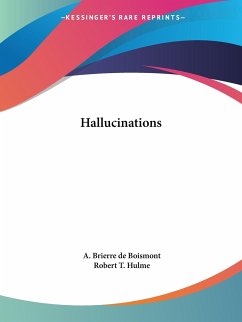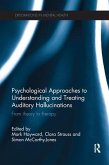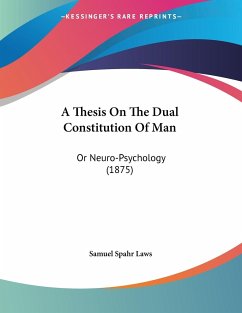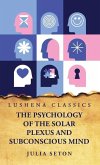This work is a history and explanation of apparitions, visions, dreams, ecstasy, magnetism and somnambulism. The subject of hallucinations is one of universal interest. Contents: definition and divisions of hallucinations; hallucinations coexisting with sanity; hallucinations involving insanity; hallucinations in their relation to illusions; hallucinations in monomania, stupidity, mania, dementia and general paralysis; in delirium tremens; in nervous diseases not constituting insanity; in nightmare and dreams; in ecstasy, animal magnetism and somnambulism; in febrile, inflammatory, acute, chronic and other diseases; causes of hallucinations; hallucinations in relation to psychology, history, mortality and religion; treatment; hallucinations in relation to medical jurisprudence.
Hallucinations is a book written by A. Brierre De Boismont, a French physician and psychiatrist, first published in 1859. The book explores the phenomenon of hallucinations, defined as perceptions in the absence of external stimuli, and their relation to mental illness, physical illness, and drug use. The author draws from his own clinical experience and case studies to provide a comprehensive examination of the different types of hallucinations, including visual, auditory, olfactory, and tactile hallucinations. He also discusses the role of suggestion, imagination, and superstition in the formation of hallucinations.De Boismont explores the causes of hallucinations, including fever, sensory deprivation, and mental illness such as schizophrenia and bipolar disorder. He also examines the effects of various drugs on the perception of reality, including opium, hashish, and alcohol.The book provides a historical perspective on the understanding of hallucinations, tracing its roots in ancient Greek philosophy and medieval demonology. De Boismont also discusses the cultural significance of hallucinations in religion, art, and literature.Overall, Hallucinations is a pioneering work in the field of psychiatry and a fascinating exploration of the human mind and its perception of reality.1860. This work is a history and explanation of apparitions, visions, dreams, ecstasy, magnetism and somnambulism. The subject of hallucinations is one of universal interest. Contents: definition and divisions of hallucinations; hallucinations coexisting with sanity; hallucinations involving insanity; hallucinations in their relation to illusions; hallucinations in monomania, stupidity, mania, dementia and general paralysis; in delirium tremens; in nervous diseases not constituting insanity; in nightmare and dreams; in ecstasy, animal magnetism and somnambulism; in febrile, inflammatory, acute, chronic and other diseases; causes of hallucinations; hallucinations in relation to psychology, history, mortality and religion; treatment; hallucinations in relation to medical jurisprudence.This scarce antiquarian book is a facsimile reprint of the old original and may contain some imperfections such as library marks and notations. Because we believe this work is culturally important, we have made it available as part of our commitment for protecting, preserving, and promoting the world's literature in affordable, high quality, modern editions, that are true to their original work.
Hinweis: Dieser Artikel kann nur an eine deutsche Lieferadresse ausgeliefert werden.
Hallucinations is a book written by A. Brierre De Boismont, a French physician and psychiatrist, first published in 1859. The book explores the phenomenon of hallucinations, defined as perceptions in the absence of external stimuli, and their relation to mental illness, physical illness, and drug use. The author draws from his own clinical experience and case studies to provide a comprehensive examination of the different types of hallucinations, including visual, auditory, olfactory, and tactile hallucinations. He also discusses the role of suggestion, imagination, and superstition in the formation of hallucinations.De Boismont explores the causes of hallucinations, including fever, sensory deprivation, and mental illness such as schizophrenia and bipolar disorder. He also examines the effects of various drugs on the perception of reality, including opium, hashish, and alcohol.The book provides a historical perspective on the understanding of hallucinations, tracing its roots in ancient Greek philosophy and medieval demonology. De Boismont also discusses the cultural significance of hallucinations in religion, art, and literature.Overall, Hallucinations is a pioneering work in the field of psychiatry and a fascinating exploration of the human mind and its perception of reality.1860. This work is a history and explanation of apparitions, visions, dreams, ecstasy, magnetism and somnambulism. The subject of hallucinations is one of universal interest. Contents: definition and divisions of hallucinations; hallucinations coexisting with sanity; hallucinations involving insanity; hallucinations in their relation to illusions; hallucinations in monomania, stupidity, mania, dementia and general paralysis; in delirium tremens; in nervous diseases not constituting insanity; in nightmare and dreams; in ecstasy, animal magnetism and somnambulism; in febrile, inflammatory, acute, chronic and other diseases; causes of hallucinations; hallucinations in relation to psychology, history, mortality and religion; treatment; hallucinations in relation to medical jurisprudence.This scarce antiquarian book is a facsimile reprint of the old original and may contain some imperfections such as library marks and notations. Because we believe this work is culturally important, we have made it available as part of our commitment for protecting, preserving, and promoting the world's literature in affordable, high quality, modern editions, that are true to their original work.
Hinweis: Dieser Artikel kann nur an eine deutsche Lieferadresse ausgeliefert werden.








